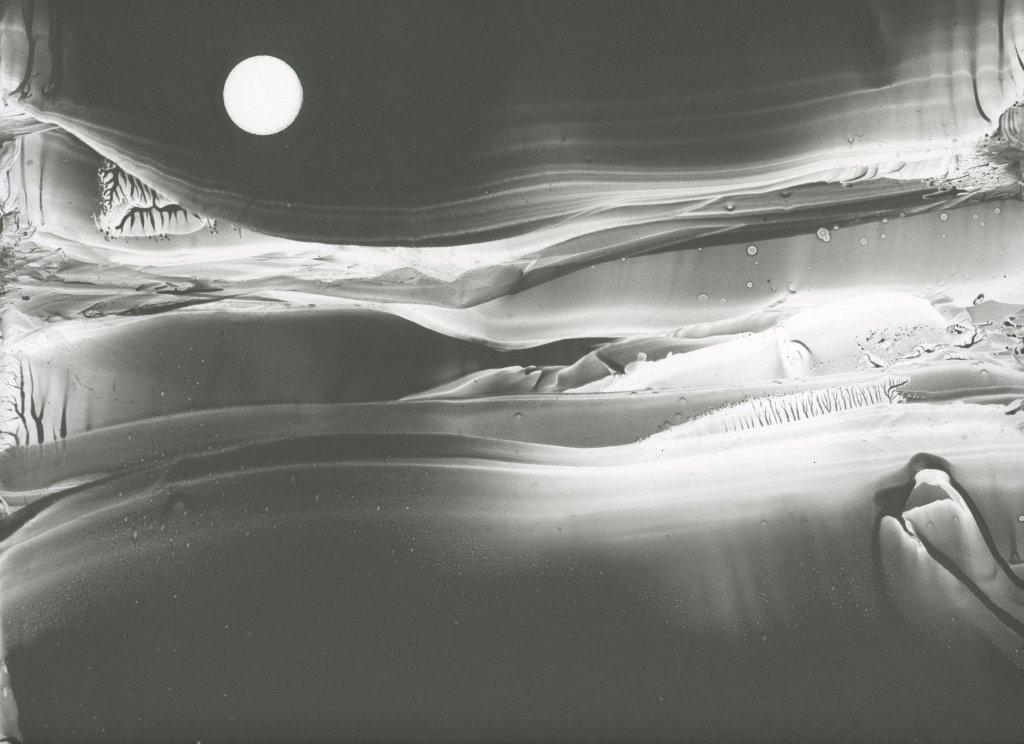Made through a process similar to the Japanese suminagashi (floating ink) technique, Roland Flexner’s drawings balance chance and control. Flexner describes his process for the graphite works:
I have three trays, two of pure water, and a third of liquid graphite. First I dip the blank paper in water, just to have that surface ready to dissolve the mixture of graphite. The second dip is the graphite. If the paper were not wet, you would just have blobs of graphite. Because the paper is wet, the graphite starts spreading on the surface. But that way I don’t compromise the intensity of the graphite by making it so liquid that I lose the dark part. Then sometimes I dip the sheet again in clear water to make more white – though sometimes I don’t. Then I blow on it, I use straws. I spray Evian over the surface to create stars. After I have had a look at the image, I press on the back, with my hand. I know what I want to change before it’s dry, in a matter of seconds, and I apply pressure to push the graphite along.
The resulting works hover in beautiful space between sensual abstraction and haunting landscape. Flexner has exhibited extensively, and his work is in major public collections such as The Metropolitan Museum of Art, New York; the Whitney Museum of American Art, New York; Centre Georges Pompidou, Paris; and the Wadsworth Atheneum Museum of Art, Harford. His work was recently seen in the 2010 Whitney Biennial.
